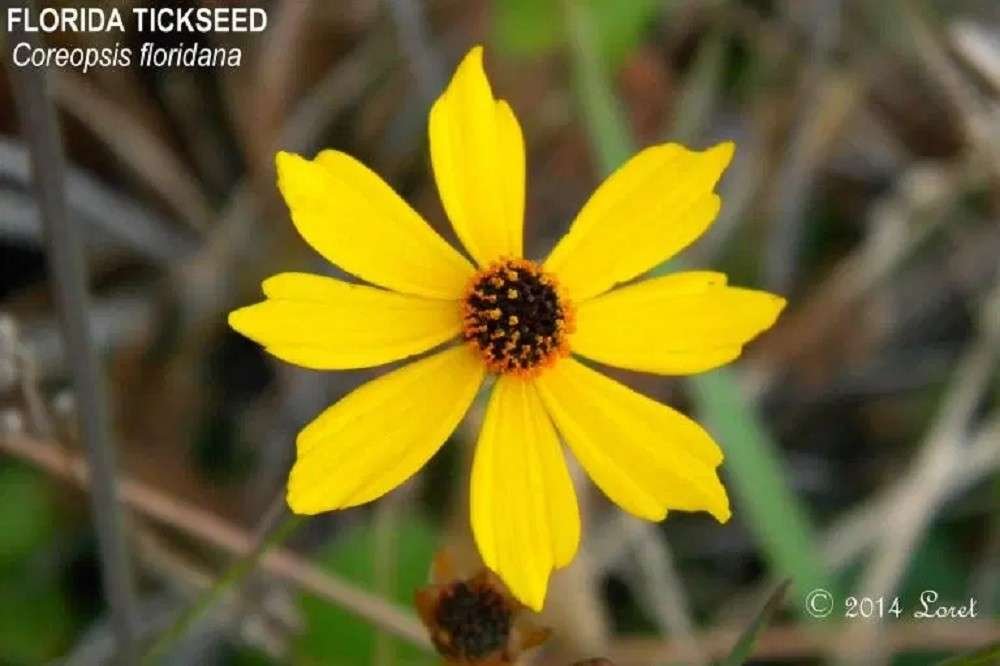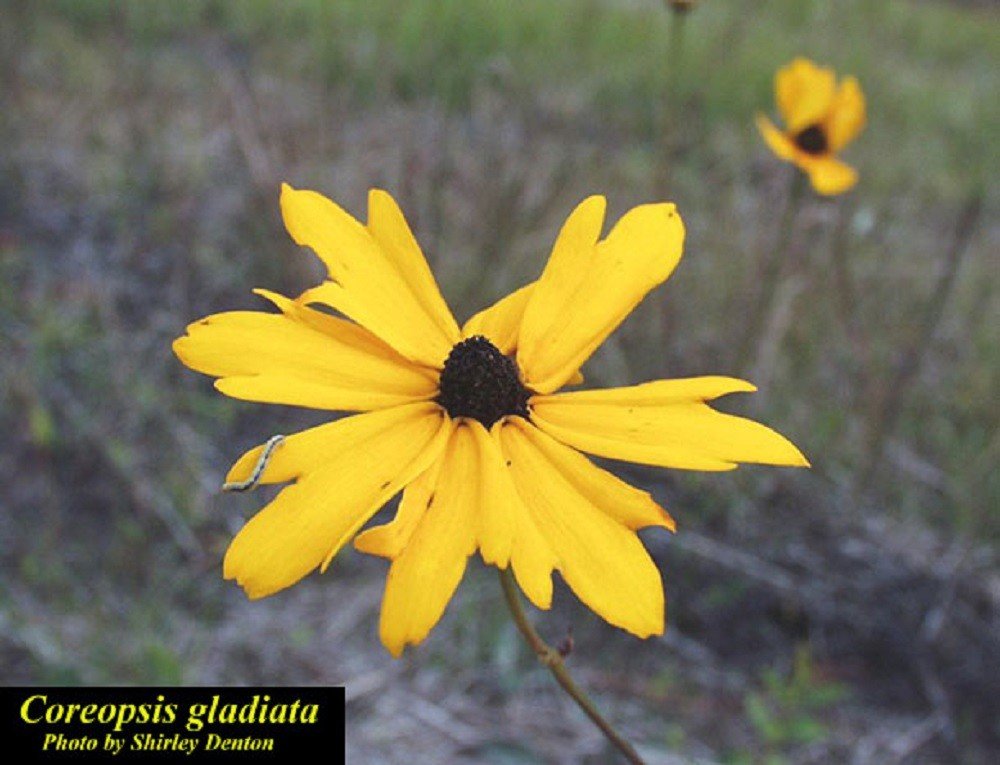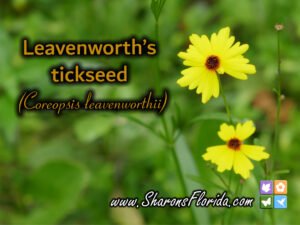Coreopsis Native to Central Florida
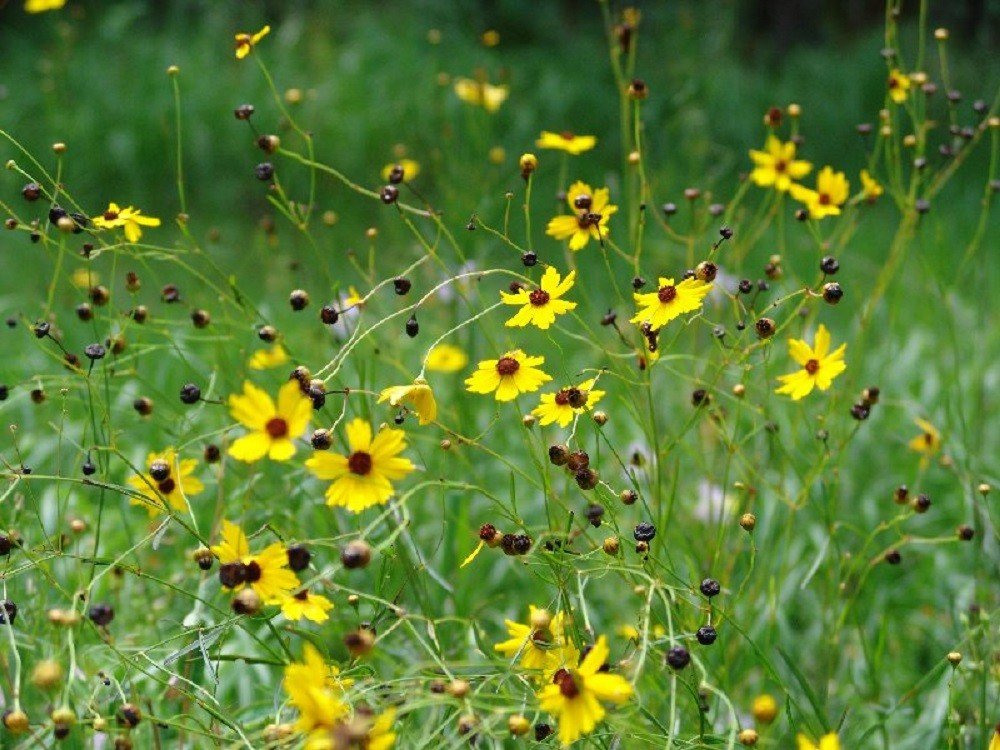
Coreopsis are native wildflowers found in the Asteraceae family of plants.
There are twelve native species of coreopsis documented for Florida. Four of those are found in central Florida so I will focus on those. At the bottom of my article you can find a list of the remaining species for north Florida and a link to the Atlas of Florida Plants if you would like to see herbarium specimens or find specific counties of occurence.
The coreopsis, or tickseed as it’s commonly called, has been designated the Florida State wildflower since 1991. The image of bright yellow flowers can be seen in brochures and on license plates throughout the state. Ironically the coreopsis displayed most often is Coreopsis tinctoria (golden tickseed), which is not native to Florida, but does happen to be native to the Eastern United States.
Why the powers-that-be chose a non-native Coreopsis as the state wildflower is beyond me considering we have two endemic species (only growing in our state). The first version of the license plate, of the non-native tickseed, appeared in 1999, and has since been revised. The current version shows a flower of Coreopsis leavenworthii (Leavenworth’s tickseed) and Coreopsis nudata (Georgia tickseed). Well, they got one right anyway. Why it’s so hard to just use a native species of coreopsis as our state wildflower is beyond me. If it were up to me I would use the Florida tickseed (Coreopsis floridana) not the Georgia tickseed (Coreopsis nudata).
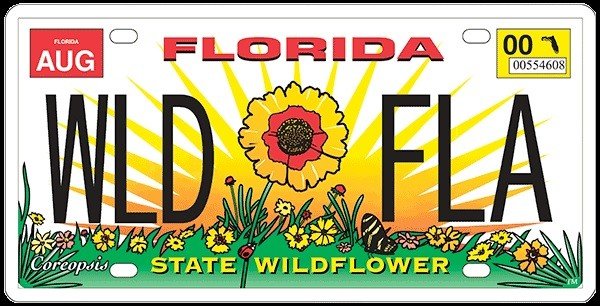
The state wildflower certainly deserves a place in every Florida green space, but like a lot of the more diminutive Florida wildflowers it tends to be wispy and gets scraggly looking once it’s done blooming so it’s not a good choice for growing as a single specimen, but best grown en masse or mixed with other wildflowers. A mass planting of tickseed alone can be stunning with all of the brilliant yellow flower heads.
Coreopsis plants don’t produce much foliage, but rather appear as a bunch of spindly flower stems so you need quite a few of them together to make an impact and fill in the bare bits. Lanceleaf tickseed is one of the few species that have enough leaves at the base to form a basal rosette, but they would still tend to get lost in the landscape if planted alone. I like to use lanceleaf tickseed mixed in flower beds with other flowers like red salvia or blue curls.
Coreopsis is a great wildflower to grow if you have the right spot because they are native, provide nectar and pollen for our insects, and are maintenance free once established. They look great in a wildflower meadow or as a large grouping.
Getting coreopsis started in your green space is an easy enough task. If you are patient you can get away with planting one or two plants in a given area and let them go to seed allowing seedlings to come up the following year. Starting plants this way is economical, but takes time. Starting a flat of seedlings and planting out dozens is the best strategy for a large planting of them. Of course, direct sowing seeds will work as well. Do your best to get Florida ecotype seeds so they have the genetics to thrive in our harsh environment.
All coreopsis like their feet wet, or at least constantly moist. Coreopsis lanceolata is the only central Florida species that is found growing in drier conditions, but it still prefers regular waterings and won’t thrive in the home landscape if it stays too dry.
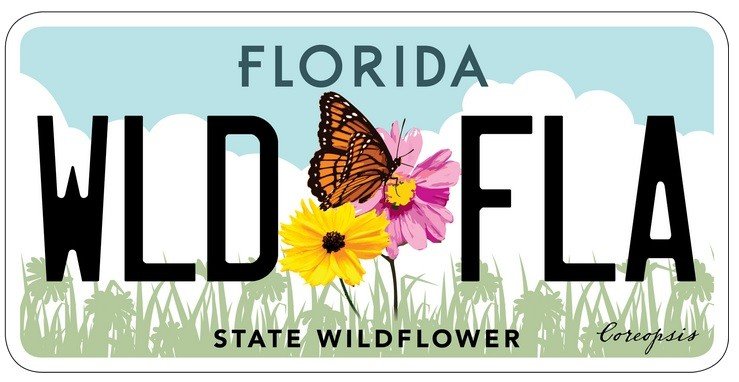
When you pick a spot for planting coreopsis choose a problem area like a swale (with occasional standing water), wet ditch, a/c runoff, or a dripping faucet. If you can provide them with constant moisture they will thrive and continue to reseed and regrow for years to come.
Coreopsis provide nectar and pollen for a great many of Florida’s insects. Since the flowers are rather small the pollinators that are attracted tend to be small. Coreopsis (tickseed) are visited by small insects like sweat bees, skippers, bee flies, flower flies, and the like. The seeds are eaten by songbirds and small mammals such as finches, sparrows, squirrels, and mice.
Coreopsis floridana (Florida tickseed)
Habitat: Coreopsis floridana is a frequent wildflower found growing in wet pinelands and wet forests.
Leaves: Alternate, entire, with simple margins. Leaves are very sparse on the upper part of the plant and the few that are present are linear in shape and clasping. The lower leaves are stalked, clasping, and oblanceolate in shape forming a loose basal rosette.
Flowers: The flowers are yellow with brown centers and appear in the fall and winter.
Region: Endemic to Florida. Coreopsis floridana can be found throughout the entire state except for the Keys.
Coreopsis gladiata (Coastalplain tickseed)
Habitat: Coreopsis gladiata is an occasional wildflower found growing in wet pinelands.
Leaves: Alternate, entire, with simple margins. Leaves are sparse on the upper part of the plant and those that are present are spatulate in shape and stalked. The lower leaves are stalked, and oblanceolate in shape with smooth (glabrous) surfaces.
Flowers: The flowers are solid yellow with a brown, conical shaped, center that protrudes similar to a coneflower. Flowers appear in the summer and fall.
Region: Coreopsis gladiata is found from north Florida south to Highlands County.
Coreopsis lanceolata (lanceleaf tickseed)
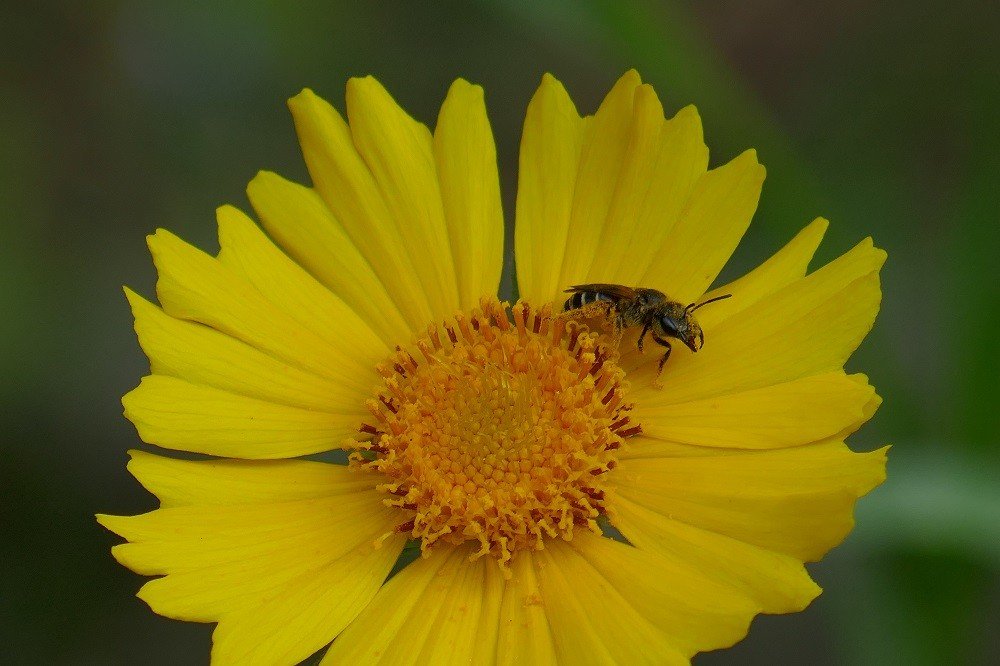
Habitat: Coreopsis lanceolata is an occasional wildflower found growing in sandhills and disturbed sites.
Leaves: Opposite, entire, may be simple or with 1 – 2 lobes. The leaves of the upper plant stems are sparse and lance shaped.
The lower leaves are stalked, lanceolate in shape, with some having lobes.
Flowers: Solid yellow flowers with a golden / orange center. Flowers appear in the spring.
Region: Coreopsis lanceolata is found from north Florida south to Lake County.
Coreopsis leavenworthii (Leavenworth’s tickseed)
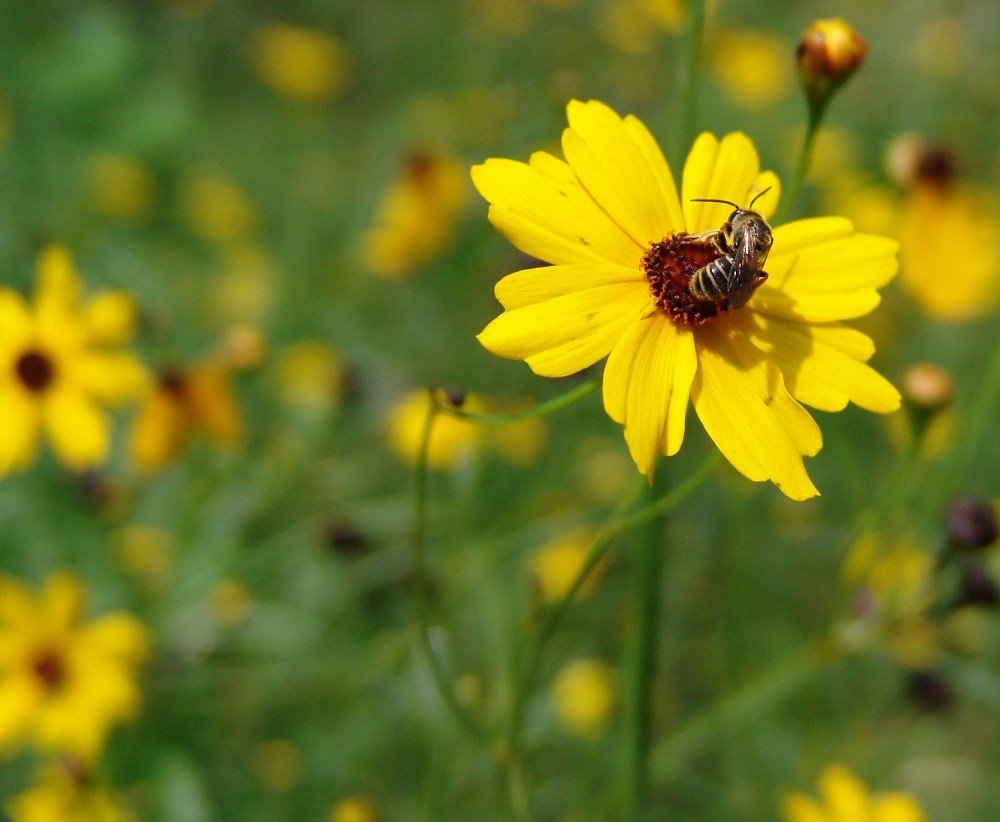
Habitat: Coreopsis leavenworthii is a commonly seen wildflower found growing in wet flatwoods, wet pinelands, disturbed sites and roadside ditches.
Leaves: Opposite, entire, and simple. The leaves of the upper plant stems are linear to oblanceolate in shape.
The leaves become more abundant lower down the stem, do not generally form a rosette, and are linear to oblanceolate in shape.
Flowers: Solid yellow flowers with a brownish center. The flowers appear all year.
Region: Endemic to Florida. Coreopsis leavenworthii is found from north Florida south throughout the Keys.
I sell Leavenworth’s Tickseed Seeds (Coreopsis leavenworthii) ✤ 100 Seeds here at my Ebay store.

The remaining native species of Coreopsis found in more northern counties. North of Alachua County.
Coreopsis bakeri (Baker’s tickseed)
Coreopsis grandiflora (largeflower tickseed)
Coreopsis integrifolia (fringeleaf tickseed)
Coreopsis linifolia (Texas tickseed)
Coreopsis major (greater tickseed)
Coreopsis nudata (Georgia tickseed)
Coreopsis pubescens (star tickseed)
Coreopsis tripteris (tall tickseed)
Leavenworth’s tickseed is a native, annual, wildflower. It is endemic to Florida and several counties in south Alabama. Endemic means it’s only found in those locations. Coreopsis is also our state flower!
It grows to a height of about 2-3 feet when in flower. It likes full sun with moist to wet soil.

